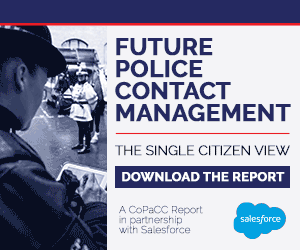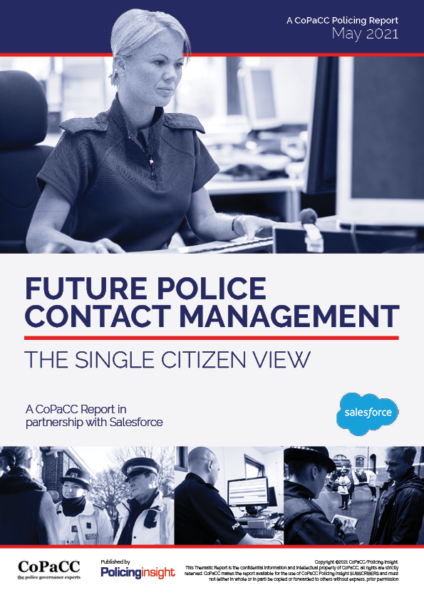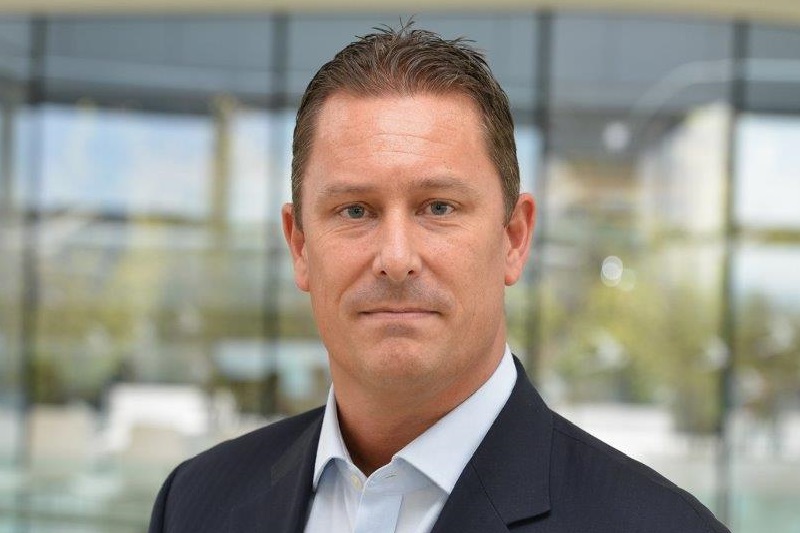The launch by the Police Digital Service (PDS) at the end of April of a new Social Media Management and Engagement Framework was a significant step forward in the development of multichannel contact management – and not only for policing, but for other blue light services and local authorities who can also take advantage of the Framework.
We very much see this as strategy drives direction, and the Digital Programme Board drives the protocol, sign up and everything else, but you need product; with commission services involving PDS, I think we’ve almost created the loop now to make a lot of this work.”
ACC Alan Todd, NPCC Contact Management Lead
PDS CEO Ian Bell said the framework would enable forces to more efficiently manage the “explosion of social media, and the plethora of information” available to policing, which itself provided “both challenge and huge opportunity”. It will also help them to meet the nationally agreed standards for social media management, and support the development of the Target Operating Model (TOM) for the integrated use of social media.
The procurement framework also specified suppliers for the platform – Orlo (SocialSignIn Ltd) and Softcat, in partnership with Salesforce – which, as NPCC Contact Management Lead, PSNI ACC Alan Todd, explained in the CoPaCC Future Police Contact Management report, is another important stage in the development of multichannel contact: “We very much see this as strategy drives direction, and the Digital Programme Board drives the protocol, sign up and everything else, but you need product; with commission services involving PDS, I think we’ve almost created the loop now to make a lot of this work,” said Mr Todd.
And for Steve Norris, Police Market Director at Salesforce UK, the company’s inclusion on the procurement framework will enable them to play a key role in supporting policing through a major transformational period in relation to contact management. “I think that everyone recognises that there is a channel change that needs to happen,” said Steve, who has worked in the tech industry for more than 30 years – and in policing for the past decade.
Transformation journey
The company is already working with or talking to 15-20 UK police forces about social media and multichannel contact, with a focus on what it calls ‘Citizen Connect’ – “providing a single platform and common licence from a single supplier,” explained Steve.
Every police force would want to have their citizens doing more for themselves, rather than having to take phone calls; so having things like Single Online Home (SOH) or even local portals for them to do citizen engagement through is an important requirement.”
Steve Norris, Police Market Director, Salesforce UK
“For us, it’s about understanding what a force’s transformation journey is going to look like, if indeed they’ve actually thought about it at all.
“For example, one focus for us is around balancing up the citizen versus the police force, in terms of that see-saw of benefit. Every police force would want to have their citizens doing more for themselves, rather than having to take phone calls; so having things like Single Online Home (SOH) or even local portals for them to do citizen engagement through is an important requirement.
“At the moment, that see-saw tips very much in favour of the citizen rather than the force, because the citizen input through SOH then creates more workarounds and more manual interventions for the force once it’s submitted through the web portal. That just adds to the workload for the force control room and any digital team they may have.
“I know from forces we’ve spoken to that some are in favour of having a multidisciplined, ubiquitous team; when we’ve looked at the issue to work out the best way to get to that point, the reality is that it’s all about channel consolidation.”
Salesforce have worked with police forces around this issue, and found that some have upwards of 20 different citizen ‘touchpoints’ which all lead to different types of information; all are managed separately, so consolidating those has to be part of moving forwards. And alongside consolidation, Steve believes that, given the right platform and software, forces could be making much better use of the “plethora of information” highlighted by Ian Bell – a view shared by many of those we spoke to in producing the CoPaCC Future Police Contact Management report, including Chief Supt Dave Jackson, the Head of the Metropolitan Police’s Contact, Command & Control service.
“Using the ‘DIKW’ pyramid and continuum – data, information, knowledge and wisdom – is a helpful way of looking at this,” said Steve.
“At the bottom is the ‘data’ layer – police forces have an abundance of rich, well-maintained data. But data on its own means nothing; if you have an address, that address is pretty useless without the next layer – information – which, for example, would give you details about the nominal at that address.
“Above that is the ‘knowledge’ layer – the historic engagements, associated complaints, any criminal record or intel; and finally there’s the ‘wisdom’ layer which gives you that action to undertake, the ‘next best action’.
“While the model may not be appropriate in every setting, in relation to policing and how we manage and respond to cases and contact, I think it’s a really helpful approach. It illustrates that we have a wealth of data, but that data is nothing without all of the other layers, and you can then lay the various contact and engagement channels over that to get an even better insight.”
The technical offering
Salesforce’s technical offering is an integrated contact management and CRM platform based on open APIs – “which ensures that it is readily compatible with much of what is already out there, and can adapt to work with any new packages coming out,” said Steve.
If you can obtain pictures from a citizen and relay them quickly to an IP device on an officer’s collar, that will be a significant step forward – for things such as missing person pictures, maps, briefings etc. The gap in being able to do that at the moment is definitely down to the contact channels.”
Steve Norris, Police Market Director, Salesforce UK
“We deliver software as a service, which means that the customer doesn’t have to worry if it’s on cloud A or cloud B, or whether the provider is accredited to the right level (that’s dealt with up front). We provide three software updates a year, free of charge, which ensures that customers remain up to date in terms of technology.”
While some of those updates may at first glance appear to be minor advances, they can have major potential. For example, the company is preparing to roll-out a new update for summer 2021, which includes the ability to send an Apple iMessage to a police contact centre (at the moment such messages have to go via SMS as the message bearer). “It’s only a small capability, but it has a massive reach amongst a global audience with millions of iPhones. The challenge of keeping the technology up to date is something that we enjoy.”
That forward-looking approach will also ensure that the platform is ready for one of the main milestones in bluelight communications over the next five years – the scheduled launch of the Emergency Services Network (ESN) in 2024. “Our platform is ready-built for that, because ESN is an IP network, and control room capabilities have already started to be upgraded in preparation for that transformation,” said Steve. “I think contact will need to be upgraded to provide the same level of IP capability that ESN will offer. If you can obtain pictures from a citizen and relay them quickly to an IP device on an officer’s collar, that will be a significant step forward – for things such as missing person pictures, maps, briefings etc. The gap in being able to do that at the moment is definitely down to the contact channels.
“I don’t think you can ever say a platform is future proof, because not all change can be anticipated, but I think we are as forward looking as it’s possible to be.”
 That approach includes meeting the standards and operating models set out in the National Contact Management Strategy, which clearly identified the need for systems in place “to evidentially prove digital contact for prosecution purposes”. A similar message is contained within the social media Target Operating Model drawn up by the PDS, and which Salesforce signed up to as part of its inclusion on the engagement framework.
That approach includes meeting the standards and operating models set out in the National Contact Management Strategy, which clearly identified the need for systems in place “to evidentially prove digital contact for prosecution purposes”. A similar message is contained within the social media Target Operating Model drawn up by the PDS, and which Salesforce signed up to as part of its inclusion on the engagement framework.
“Our platform can actually keep information for up to 10 years, both for use in legal cases and so that it can be mined for investigation purposes,” said Steve. “It also ensures that the information held within the platform is stored and maintained by the force in a compliant way.
“It provides enhanced levels of platform encryption, event monitoring and field audit, which means that no fields can be accessed or viewed without leaving a record – effectively making the information and evidence held by the platform tamper-proof.”
But what really sets the Salesforce platform apart from others, according to Steve, is how it provides its “social media listening capability”. “When we’re listening to a force’s own accounts, we can define a number of key words that are important to them – for example, ‘knife’ or ‘gang’ – and when those words are used in a post, we can automatically create a ‘case’, assign a THRIVE score to it, and use skills-based routing to route it to the most appropriate agent.
“Once it’s with the control room, other areas of integration can be layered on top of that – so there might be a records management overlay, or a CAD overlay – which makes that content even more rich.
“That takes away the need for manual intervention, and it’s almost a management by exception capability, which frees up staff to do more and more of the skilled, complex work, rather than having to monitor social media and make a manual intervention when necessary.
“We can deflect demand away from people who need to be focusing on the more complex contact, and possibly towards those partner agencies that are more appropriate, which might be the local authority, or DEFRA, or even the Samaritans. “Certainly, when we’ve been speaking to forces, they feel it’s an area that could really help them, if they don’t have to deal with all the ‘white noise’ that’s coming in.”
Ease of use, continuous development
Aside from the technical offering of the product, Steve also acknowledged that, with increasing volumes and a more complex nature of demand, and calls for handlers to be omnicompetent, the pressures on those using the platform were growing. So anything that can make a system more intuitive, easy to tailor, and simple to train on – both in the short term and for continuous professional development – will be an advantage for users themselves.
It allows us to integrate into a control room with a platform approach that is scalable, and agile enough to cater for demands, whether short-term or medium and long-term, as the force embarks on that transformation journey.”
Steve Norris, Police Market Director, Salesforce UK
“There are products out there that do something similar, but one of the things that makes us unique is that this all sits on a single platform, with CRM running through all of the propositions that we offer,” said Steve.
“It allows us to integrate into a control room with a platform approach that is scalable, and agile enough to cater for demands, whether short-term or medium and long-term, as the force embarks on that transformation journey.
“That’s why, from the outset, we ask a force whether they already have a transformation journey planned or underway, that we can mirror onto; because if so, some of these things will be achievable very quickly. A lot of the capability is inherent within the platform, you just need to turn it on – it’s available to customers when they feel it’s necessary.
“That’s also the beauty of a cloud-delivered model. If a customer wants to change something, or create a new process, this is a ‘clicks not code’ platform, so anyone with the right profile can create a process through a series of ‘drag and drop’ fields – there’s no need for expensive or complicated hard coding to be done. That’s a big departure from some of the platforms and products used in policing in the past.”
And there’s little doubt that the approaching era of contact management will result in organisational change: “It does need to have an underpinning of executive sponsorship, a focus on delivery, and buy-in from the users,” said Steve. “That’s one of the reasons we feel that ongoing training and support from us as a supplier is so important.”
That training includes the company’s own free online resource – Trailhead – which allows anyone to log on and learn skills in a ‘gamified’ way, earning points and badges for completing different trails and achieving new skills, while at the same time delivering key knowledge about the use and potential of the platform, and specific job roles.
“It’s very popular; it’s also helping to provide additional or follow-on careers for people, and we’re seeing a lot of military vets in the US retraining using Trailhead,” added Steve. “IDC [International Data Corporation] has predicted a three trillion dollar market in Salesforce skills over the next five years. So it’s a great resource; not only does it enable people to learn at their own speed, and then continue their learning, but it can also equip them with the long-term skills they need to develop their career. When it has come to winning certain customer contracts, that has definitely helped to tip the balance in our favour.”
This interview was republished from the CoPaCC Future Police Contact Management: The Single Citizen View Report.
To download the CoPaCC Future Police Contact Management: The Single Citizen View Report please click here
 The report is FREE to download – just log in to your Policing Insight account or register a new free account.
The report is FREE to download – just log in to your Policing Insight account or register a new free account.
An independent CoPaCC thematic report, published in partnership with Salesforce, examining the police contact management landscape in the wake of 2020’s HMICFRS’s A Call for help report, the publication of the NPCC’s National Contact Management Strategy (NCMS) in 2019, and 12 months of COVID-19 lockdowns and legislation.
The report features FoI data focusing on forces’ 999 and 101 data, digital contact, use of Single Online Home (the national digital platform) and social media. It also includes interviews with police contact centre managers, major stakeholders and national leads to identify the major emerging trends as well as challenges and opportunities.
If you or your organisation does not have a subscription and would like to find out how to access all our reports, please contact [email protected] to enquire about our subscription options.
This report was produced in partnership with Salesforce whose single platform approach enables police forces to consolidate citizen touchpoints and ensure that all information related to a case is presented in a single view.
Police force systems can also connect with the Salesforce platform – using any one of their integration solutions – to automate the easy exchange of data, better inform decision making at public contact, and share the right information with officers.
See www.salesforce.com/uk/publicsector for more information


